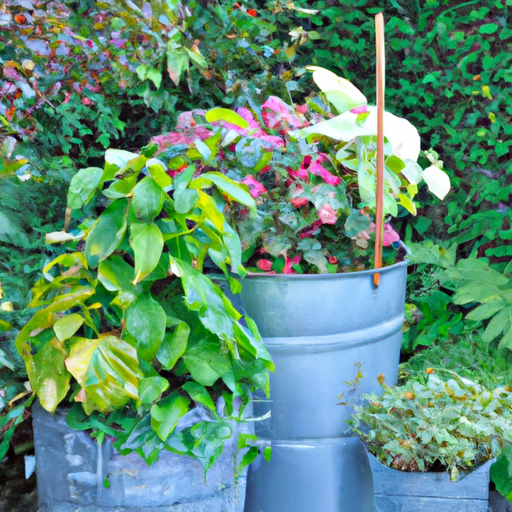Designing a Sustainable Garden with Eco-Friendly Containers
Introduction
In recent years, there has been a growing emphasis on sustainable living and reducing our carbon footprint. One area where we can make a significant impact is in our gardens. By designing a sustainable garden and using eco-friendly containers, we can create a harmonious environment that is both beautiful and environmentally friendly. In this article, we will explore various aspects of designing a sustainable garden with eco-friendly containers.
Benefits of Sustainable Gardening
Before delving into the details of eco-friendly containers, let’s first understand the benefits of sustainable gardening. Sustainable gardening practices have numerous advantages for both the environment and ourselves.
Firstly, sustainable gardens support biodiversity by providing habitats for insects, birds, and other native animals. By incorporating native plants into your garden, you attract local wildlife, which contributes to the overall balance of your ecosystem.
Secondly, sustainable gardening reduces water consumption. Traditional gardens often require excessive watering to maintain their lush appearance. However, by utilizing sustainable practices such as rainwater harvesting systems and drought-tolerant plants, you can significantly reduce water usage in your garden.
Thirdly, sustainable gardening minimizes the use of harmful chemicals like pesticides and synthetic fertilizers that can harm both plants and animals in the long run. Instead, organic methods such as composting and companion planting can be used to maintain soil fertility and deter pests naturally.
Lastly, by practicing sustainability in your garden design, you serve as an example to others in your community. Your beautiful and eco-friendly garden becomes an inspiration for others to adopt more environmentally conscious practices.
Choosing Eco-Friendly Containers
One key aspect of designing a sustainable garden is choosing the right containers for your plants. Traditional plastic pots are commonly used but have negative environmental impacts during production and disposal. Instead, opt for eco-friendly containers that are made from recycled materials or natural substances such as biodegradable fibers or clay.
Recycled containers: Many innovative companies now produce pots and containers using recycled materials such as plastic, wood, or metal. These containers not only divert waste from landfills but also have a unique aesthetic appeal.
Biodegradable containers: Biodegradable containers made from materials like bamboo, coconut coir, or peat moss are becoming increasingly popular. These containers break down naturally over time and can be planted directly into the ground without disturbing the root system.
Clay pots: Clay pots are a classic choice for gardeners due to their durability and breathability. They provide good drainage for plants while absorbing excess moisture. Opt for unglazed clay pots as they have a lower environmental impact compared to glazed ones.
Vertical Gardening with Sustainable Containers
Another sustainable gardening trend gaining popularity is vertical gardening, which maximizes space efficiency while adding an aesthetic appeal to your garden. Vertical gardens can be created using various eco-friendly containers:
Hanging planters: Hangings baskets made from natural fibers like jute or coir are not only visually appealing but also sustainable choices. They can be easily hung on walls, fences or pergolas, adding dimension to your outdoor space.
Vertical wall planters: Vertical wall planters made from recycled materials like plastic bottles or pallets are excellent options for small spaces. They allow you to grow herbs, flowers, or even vegetables vertically while saving valuable ground space.
Living walls: Living walls consist of vertical structures filled with plants that are grown hydroponically or with soil-based systems. Incorporating native plants in living walls helps purify the air and adds beauty to your surroundings.
Conclusion
Designing a sustainable garden with eco-friendly containers is not only beneficial for the environment but also rewarding for gardeners. By choosing recycled or biodegradable containers, we contribute to waste reduction and promote more sustainable practices in our communities. Incorporating vertical gardening techniques allows us to maximize small spaces while adding beauty and freshness to our surroundings.
So, let’s embrace sustainability in our gardens and create a greener world, one eco-friendly container at a time!














